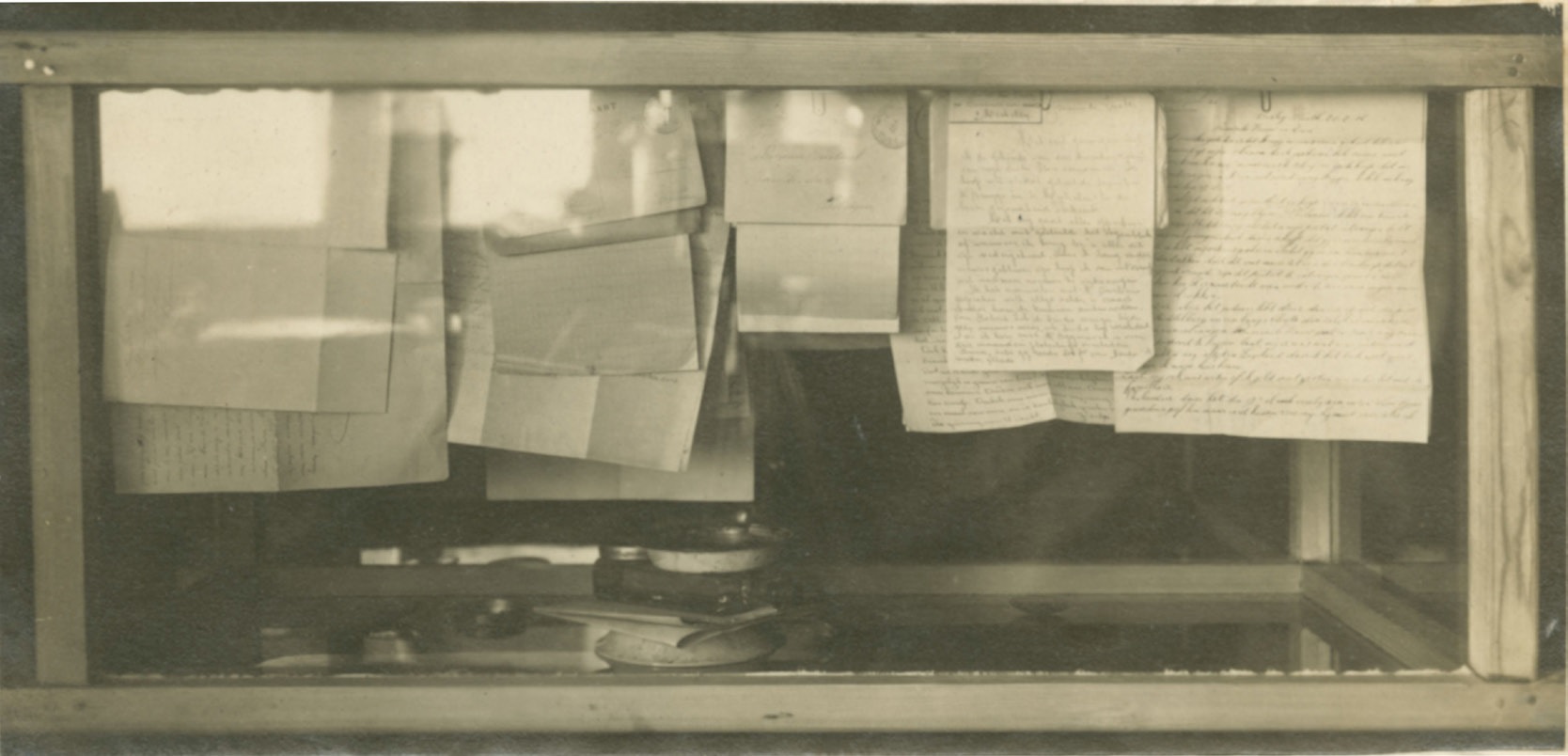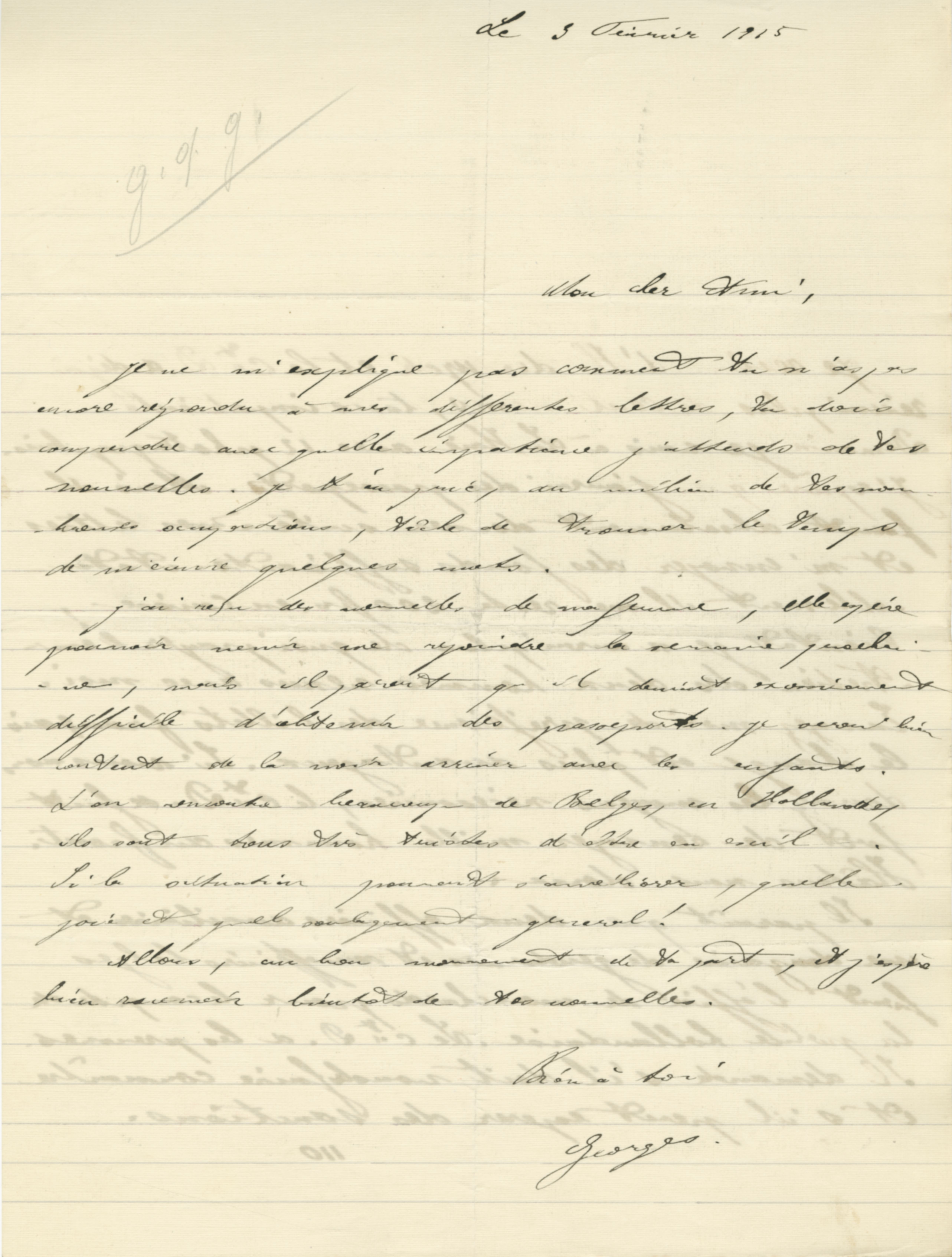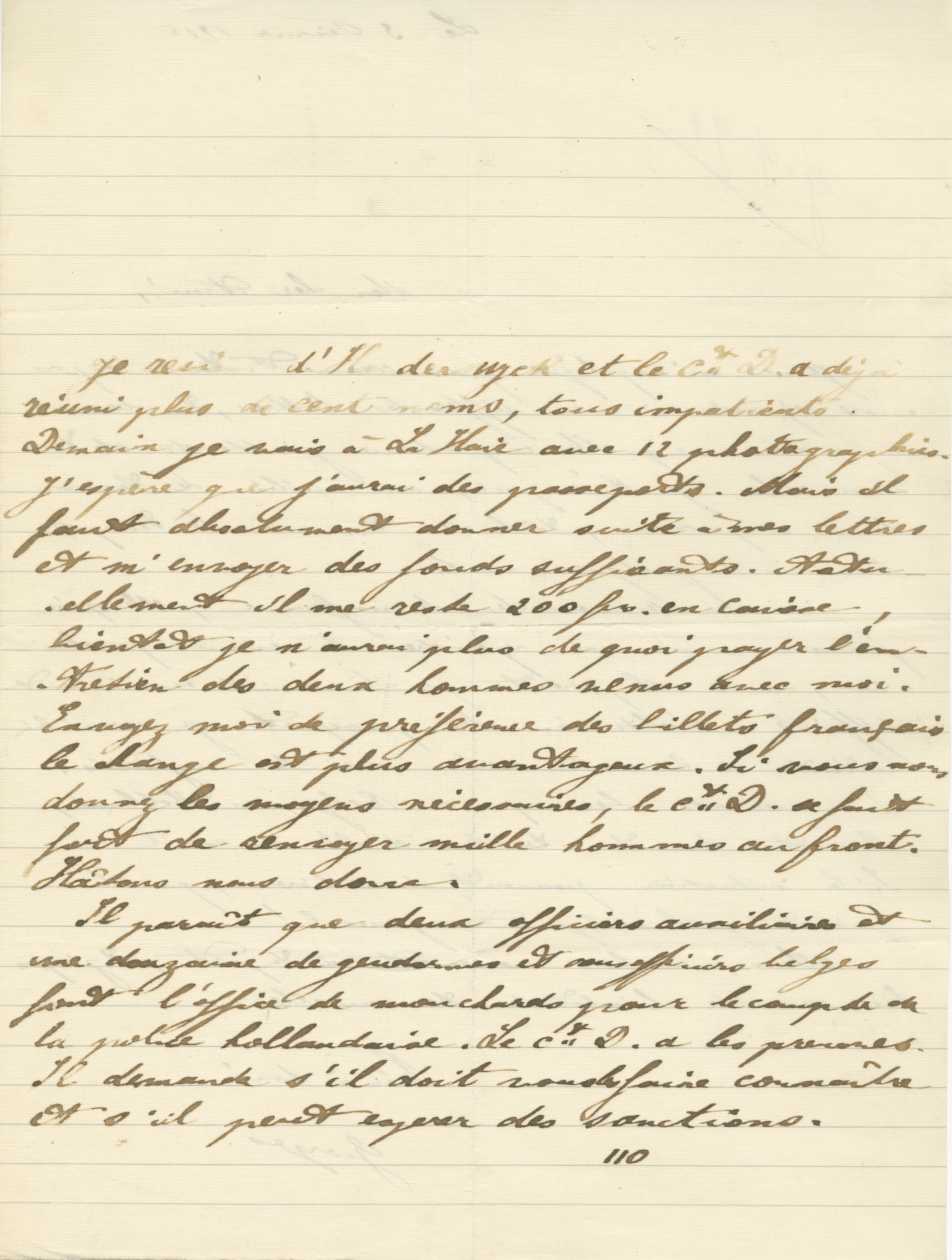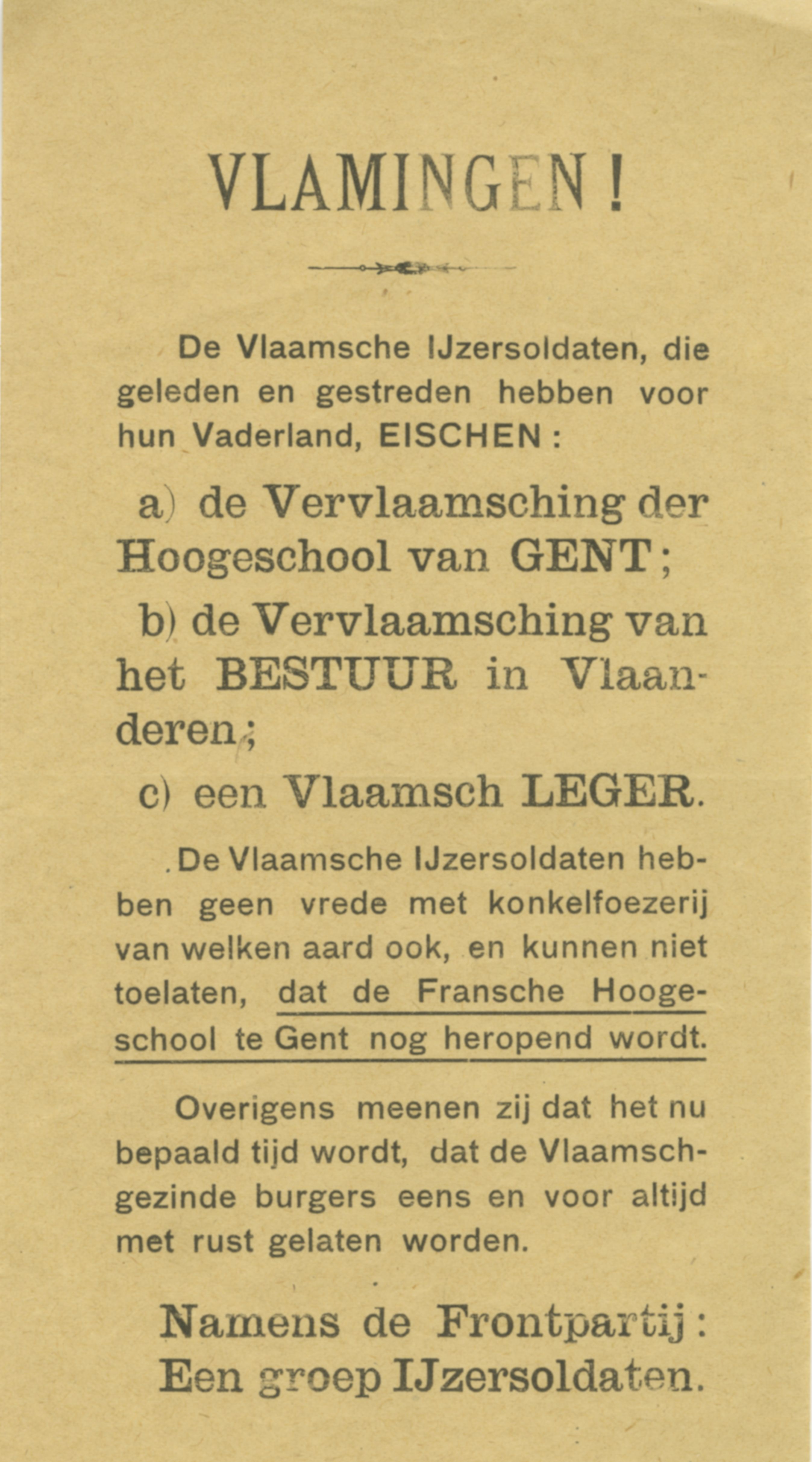| Previous page | Back to exhibition's homepage | Next page |
|
|
(APRIL 1915) |
|
| La Sûreté militaire belge est instituée le 1er avril 1915. Le service est pourvu de commissaires et d’inspecteurs composant des brigades de recherche. Principalement issus des polices communales ou de corps d’inspecteurs spécialisés, ces civils sont encadrés par des officiers. Une branche de la Sûreté opère dans les cantonnements, l’autre à l’arrière des armées (Belgique non occupée, pays alliés et neutres), basée à Folkestone la majeure partie de la guerre. | The Belgian Sûreté militaire was established on 1st April 1915. The service consisted of commissioners and inspectors organised in investigation squads. Mainly originating from the municipal police or specialised inspection bodies, the civilians were supervised by officers. A wing of the Sûreté was active in the cantonments, while the other wing operated behind the lines (non-occupied Belgium, allied and neutral countries) and was located in Folkestone during most of the war. | De Militaire Veiligheid wordt opgericht op 1 april 1915. De dienst beschikt over onderzoekbrigades die samengesteld zijn uit commissarissen en inspecteurs, afkomstig uit lokale politiediensten en uit korpsen van gespecialiseerde inspecteurs. Deze onderzoekbrigades worden geleid door officieren. Eén tak van de Veiligheid is werkzaam in de legerkwartieren, een andere werkt achter de linies (niet-bezet België en de geallieerde landen). De dienst opereert het grootste gedeelte van de oorlog vanuit Folkestone. |
| La Sûreté Militaire a pour mission principale de faire barrage à l’espionnage ennemi. Pour remplir cette mission, elle est dotée de pouvoirs étendus : éloigner et interner des repris de justice, des suspects de collaboration et d’espionnage ; procéder à des perquisitions et à des fouilles corporelles ; rechercher et saisir des armes ; empêcher des réunions subversives ; saisir et retenir les correspondances privées. | The main role of the Sûreté Militaire consisted in thwarting the enemy’s espionage activities. To do so, the service possessed extended powers: keep off and intern offenders and people suspected of collaboration and espionage; conduct (body) searches; search for and seize arms; prevent subversive meetings; intercept private correspondences. | Het hoofddoel van de Militaire Veiligheid is de vijandelijke spionage tegen te gaan. Om dit doel te bereiken, beschikt ze over verschillende bevoegdheden: het oppakken en opsluiten van mensen op de vlucht voor justitie, het opsluiten van verdachten van collaboratie en spionage, het uitvoeren van huiszoekingen, het fouilleren van personen, het opsporen en in beslag nemen van wapens, het beletten van subversieve vergaderingen en het onderscheppen van privébriefwisseling. |
| Pour neutraliser la transmission des renseignements collectés par l’ennemi, le contre-espionnage belge s’attaque à ses deux principaux modes de transmission : par carte postale et par porteur. La censure postale et le contrôle de la circulation des personnes sont ses deux principaux instruments. | In order to neutralise the transmission of enemies’ intelligence, the Belgian counter-intelligence targeted their two main methods of transmission: post cards and carriers. Postal censorship and the surveillance of the movement of persons therefore became its two main instruments. | Om het inlichtingenverkeer van de vijand te verhinderen, controleert de Militaire Veiligheid de bedeling van postkaarten en de berichten per bode. Dit doet ze door censuur toe te passen en door het personenverkeer te controleren. In samenwerking met de geallieerde diensten registreert de Militaire Veiligheid duizenden individuen. |
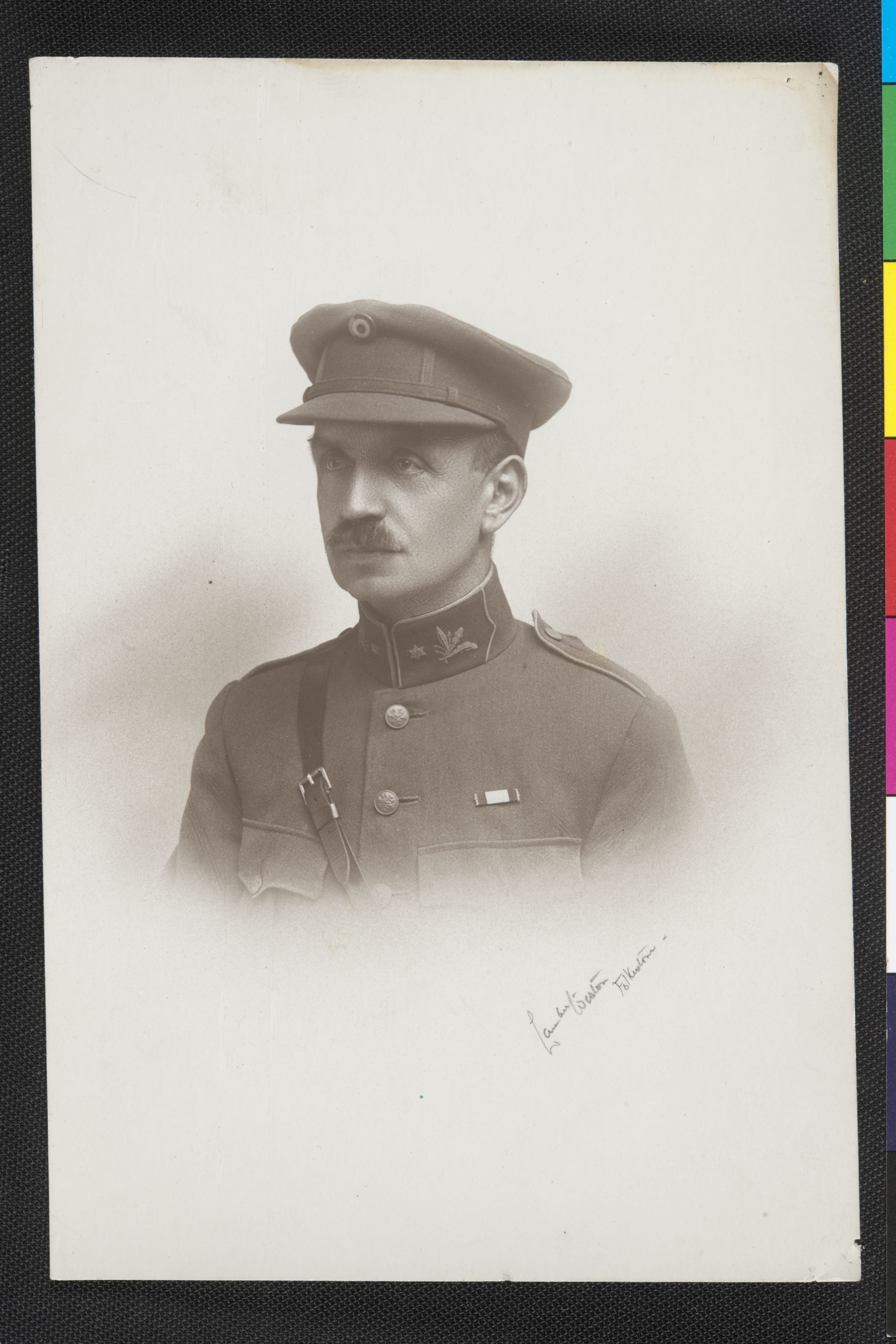 |
 |
|
François De Walque. Chef van de censuurdienst te Folkestone. Op zijn revers draagt hij het kenteken van de Veiligheid. François de Walque, head of the censorship laboratory in Folkestone; he wears the special emblem of the Sûreté on his collar François De Walque, chef du laboratoire de la censure à Folkestone ; il porte au collet l’insigne spécial de la Sûreté (europeana 14-18 / Royal Library) |
Franse spotprent van de censuurdienst French cartoon on the censorship department Caricature française du service de la censure (Gallica) |
| En collaboration avec les services alliés, la Sûreté Militaire fiche des milliers d’individus. En plus du contre-espionnage, elle combat différentes formes de subversion – la menace anarchiste et pacifiste dans les usines d’armement, par exemple, mais surtout, à partir de 1917, elle concentre ses efforts sur la détection des menées frontistes au sein de l’armée. | In collaboration with allied services, the Sûreté Militaire filed information on thousands of individuals. Besides counter-intelligence, the Sûreté also fought all kinds of subversion, such as anarchist and pacifist threats in arms factory. From 1917 on, it particularly focused on the detection of frontist actions within the army. | Naast de contraspionage bestrijdt de Militaire Veiligheid ook andere vormen van subversie, o.a. de anarchistische en pacifistische dreiging in de wapenfabrieken. Vanaf 1917 gaat haar aandacht vooral naar de Frontbeweging in het leger. |
|
Pamflet van de Frontbeweging. De opstellers en bezitters worden gezocht door agenten van de Veiligheid. Leaflet of the Frontbeweging distributed in cantonments; authors and owners of such documents were wanted by the agents of the Sûreté . Tract du Frontbeweging distribué dans les cantonnements ; les rédacteurs et les détenteurs de tels documents étaient recherchés par les agents de la Sûreté. (MRA-KLM) |
||
| Ses pouvoirs discrétionnaires valent à la Sûreté Militaire la rancoeur de nombreux soldats – ceux convaincus de défaitisme mais aussi les « douteux » ou « fils d’Allemands », qu’elle trie et interne à l’arrière, notamment au camp du Ruchard. Créé pour la durée de la guerre, le service est supprimé le 30 septembre 1919. |
The discretionary powers of the Sûreté Militaire aroused the rancour of many soldiers: those riddled with defeatism, and the “suspicious” ones, the “sons of Germans”, who were set aside and stayed in the home front, such as in the Camp du Ruchard. Created for the war, the service was dissolved on 30th September 1919. |
Door de willekeur in haar beoordeling zorgt de Militaire Veiligheid voor een gevoel van verbittering bij vele defaitistische soldaten, de “twijfelgevallen” en de zonen van Duitsers, die worden geïdentificeerd en opgesloten in het kamp van Ruchard in Frankrijk. De Militaire Veiligheid, die is opgericht voor de duur van de oorlog, wordt ontbonden op 30 september 1919. |
| Previous page | Back to exhibition's homepage | Next page |



